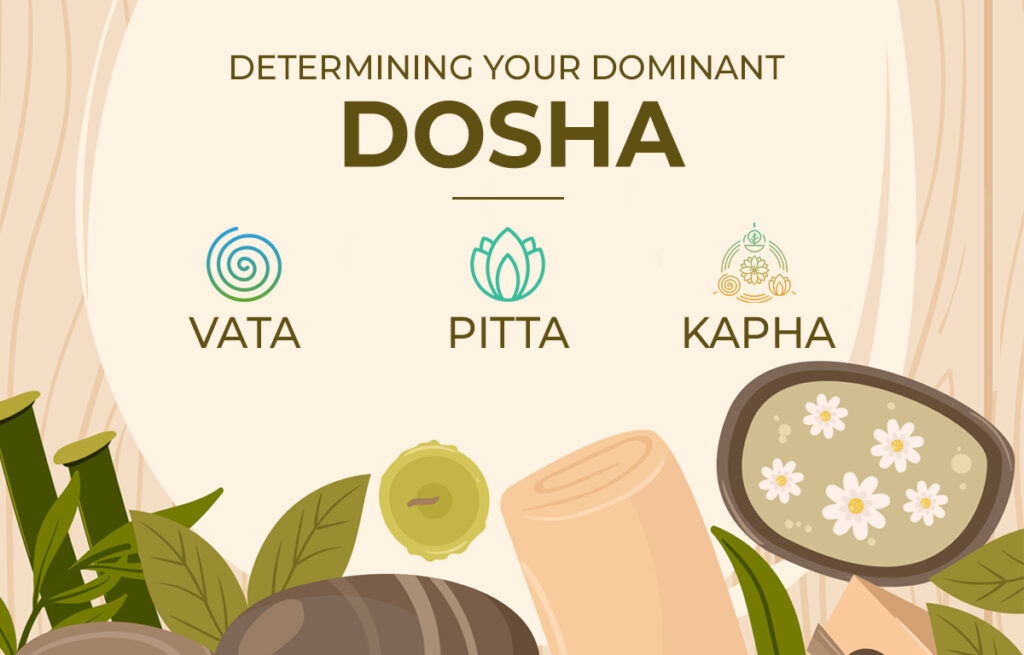Ayurvedic medicine is deeply rooted in the belief that the world is composed of five fundamental elements: aakash (space), jala (water), prithvi (earth), teja (fire), and vayu (air). These elements, in various combinations, give rise to three primary humors or doshas, namely vata, kapha, and pitta. According to Ayurvedic principles, these doshas play a significant role in shaping an individual’s physical, mental, and emotional well-being.
Each person is believed to possess a unique constitution defined by a specific ratio of these doshas, with one typically being more dominant than the others. For example, one person might exhibit a predominantly pitta constitution, while another may lean more towards vata. To determine one’s dosha composition, individuals often seek guidance from Ayurvedic practitioners.
This individualized blend of vata, kapha, and pitta is considered an individual’s Ayurvedic constitution, serving as a blueprint for attaining optimal health in accordance with Ayurvedic principles.
It’s essential to note that, while Ayurveda holds these dosha concepts in high regard, the scientific community has raised questions about their legitimacy due to limited empirical evidence. Proponents of Ayurveda argue that the lack of comprehensive research and funding has hindered the ability to establish the effectiveness of doshas in a scientific context. Instead of discrediting the practice, they advocate for more extensive research to validate and substantiate Ayurveda’s efficacy.
What Does Each Dosha Look Like?
Drawing from centuries of Ayurvedic wisdom, an Ayurvedic practitioner can discern an individual’s dosha by assessing their physical, emotional, mental, and behavioural attributes. Below, we present a broad overview of each dosha:
Vata Dosha:
Elements: Air and space (ether).
- Characteristics: Cold, light, dry, rough, flowing, and spacious.
- Season: Autumn.
- Traits: Slim, energetic, creative, innovative, easily distracted.
- Strengths: Quick learners, creative, multitasks, kind-hearted, flexible.
- Weaknesses: Forgetful, anxious, mood swings, sensitive to cold, trouble sleeping, irregular appetite, digestive issues, poor circulation (cold extremities).
- Recommendations: Establish a regular daily routine, manage stress through meditation, maintain warmth, and consume warm foods.
Kapha Dosha:
Elements: Earth and water.
- Characteristics: Steady, stable, heavy, slow, cold, and soft.
- Season: Spring.
- Traits: Strong, thick-boned, caring, methodical.
- Strengths: Empathetic, patient, calm, wise, happy, strong bones, healthy immune system.
- Weaknesses: Prone to weight gain, slow metabolism, sluggishness, over-sleeping, breathing issues, mucus build-up, and susceptibility to depression.
Recommendations: Focus on regular exercise, a healthy diet, maintaining warmth, and establishing a regular sleep routine.
Pitta Dosha:
Elements: Fire and water.
- Characteristics: Hot, light, sharp, oily, liquid, and mobile.
- Season: Summer.
- Traits: Muscular, athletic, strong leaders, motivated, competitive.
- Strengths: Intelligent, purposeful, quick learners, self-determined, goal-oriented, strong, quick metabolism, good circulation, healthy skin and hair.
- Weaknesses: Impatient, prone to conflict, always hungry, mood swings when hungry, prone to acne and inflammation, sensitive to heat.
Recommendations: Focus on work-life balance and avoid excessive heat.
These descriptions offer a concise understanding of the general attributes associated with each dosha and serve as a foundation for Ayurvedic health and wellness practices tailored to individual dosha types.

